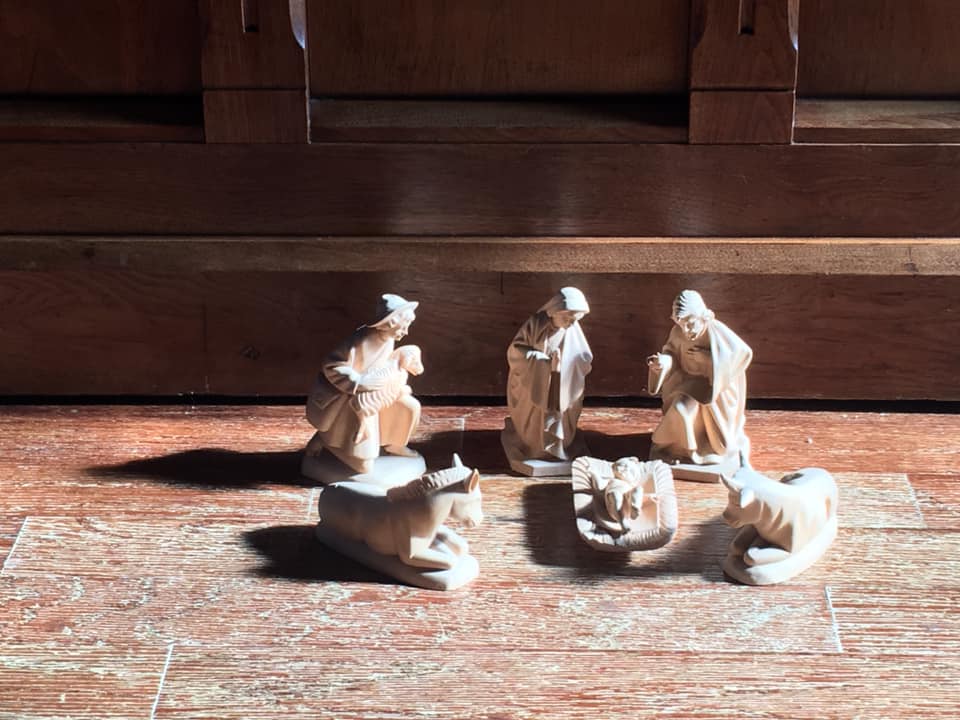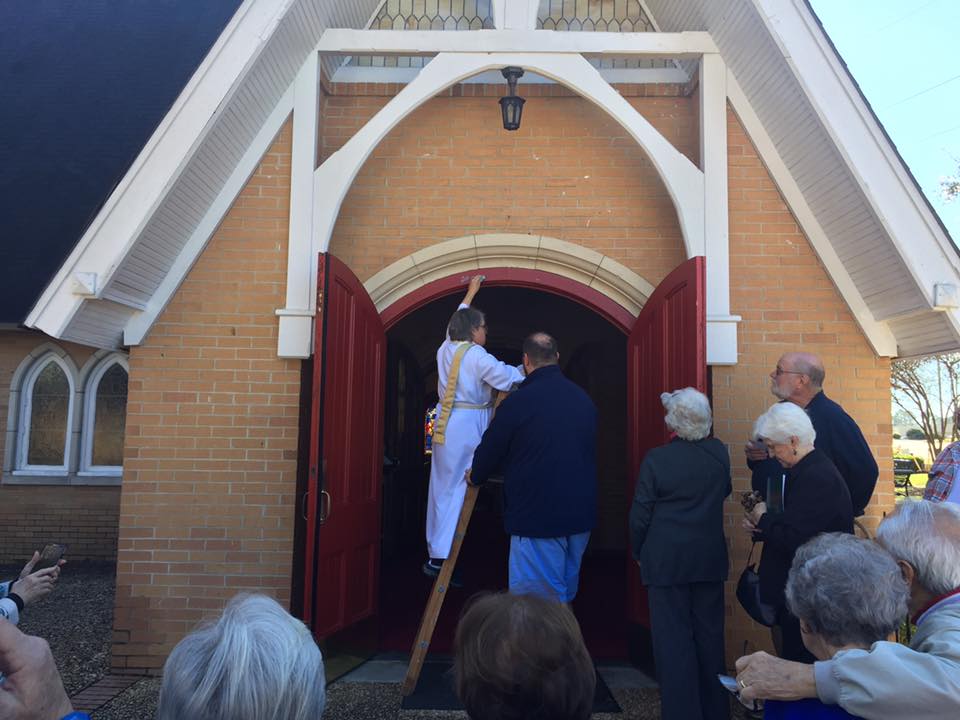
Today, life began to slow down; enough that I was able to go out and do some photography and then sit down to write this post.
It has been a month since I’ve been here, a month so densely packed that there weren’t enough hours in the day for all that needed to be done. Our first Christmas without Maria was even harder than I had anticipated it would be and in the end, was filled to overflowing with the beauty, grace and wonder of sharing a first Christmas with the people of Holy Comforter. This parish I now serve is vulnerable in ways that maybe most, if not all, Episcopal churches are vulnerable. I experienced the truth about us, that the vulnerability in no way diminishes the courage and goodness with which we spend our days. Each Sunday in Advent seemed to add a new layer of meaning to our preparations for Christmas.
Christmas Eve showed me what a liturgically bold and curious community I am a part of. Not only did people notice that I had chosen an alternative Eucharistic prayer for our service, held in the early evening, but were so lovely about telling me how much it had meant to them. It’s a prayer that is more inclusive, that uses powerful images of Mary and her role in the story of redemption, and does so in a way that manages to be both solemn and joyous at the same time. The simple service on Christmas morning, when sunshine streaming through our chapel windows made the nativity set my mom gave me shortly before she died luminous, had all the gentleness and silence one might have hoped for as Mary, Joseph and baby Jesus stirred at the beginning of a new day.

Then, on Epiphany Sunday we were our most playful selves at Holy Comforter, with three kings in the procession, one of them swinging the thurible most majestically, I must say. At the end of the service, the entire congregation followed the choir and altar party out of church, playing orff instruments, dancing (a little modestly) and singing Siyahamba–“We are marching in the light of God.”

I received a beautiful Epiphany practice from the previous rector at Church of the Ascension and I am thankful for having been able to bring this gift with me to Holy Comforter. Right outside the red doors of the church we stopped long enough for me to clamber up a ladder to follow the old, old tradition of blessing the lintel: 20+C+M+B+19.
The letters each remind us of one of the wise men (Caspar, Melchior, and Balthazar). They are also an abbreviation for Christus mansionem benedicat; Christ bless this house. We marched some more and then stopped, this time at the doorway to our offices. And then, we were on the move again, this time going almost all the way around our building to bless the door of the food pantry where 300 neighbors and their families each month receive food that keeps hunger at bay. I heard one parishioner comment that he had not been back in that part of our church for 20 years. Sometimes, when you follow the Epiphany star, you end up in places you never thought you would come by again.
We bless our lintels using chalk and over the course of the year, the elements will slowly, but surely, wash away the signs of the blessing. I love that all we ask for is a fleeting blessing. After all, what we have is a next step we can take, and sometimes that step is very small. Each step we take is particular, a response to what we only see dimly now. Who knows what we might need and ask for when, once again in 2020, we stop as a new year begins, to ask for yet another blessing. Over time, there is blessing asked upon blessing, so many layers of hopes and dreams and fears of ordinary people trying to be faithful. The blessings we ask for bring us very close to the promise of the Prologue to John: that from the fullness of God’s love we receive grace upon grace.
All kinds of other things have happened–on Wednesday of last week, out in the chill of morning, I found myself digging a small grave that would hold the ashes of member of the parish who we were burying that afternoon. I was struck all over again by all that is both beautiful and bizarre about being a priest in a small parish.
Today, a leader of our food pantry and I began to make plans for how to respond to our neighbors when the SNAP payments stop at the end of this month and are unavailable to food vulnerable people during the government shut-down. We’ve had our vestry retreat and next week we’ll have our annual meeting. Intense days of work and prayer, of surrender and response. Days when sometimes all I could do was look for the light, days when the light washed me in warmth and consolation, and days when the light lightened our darkness enough to keep marching.
